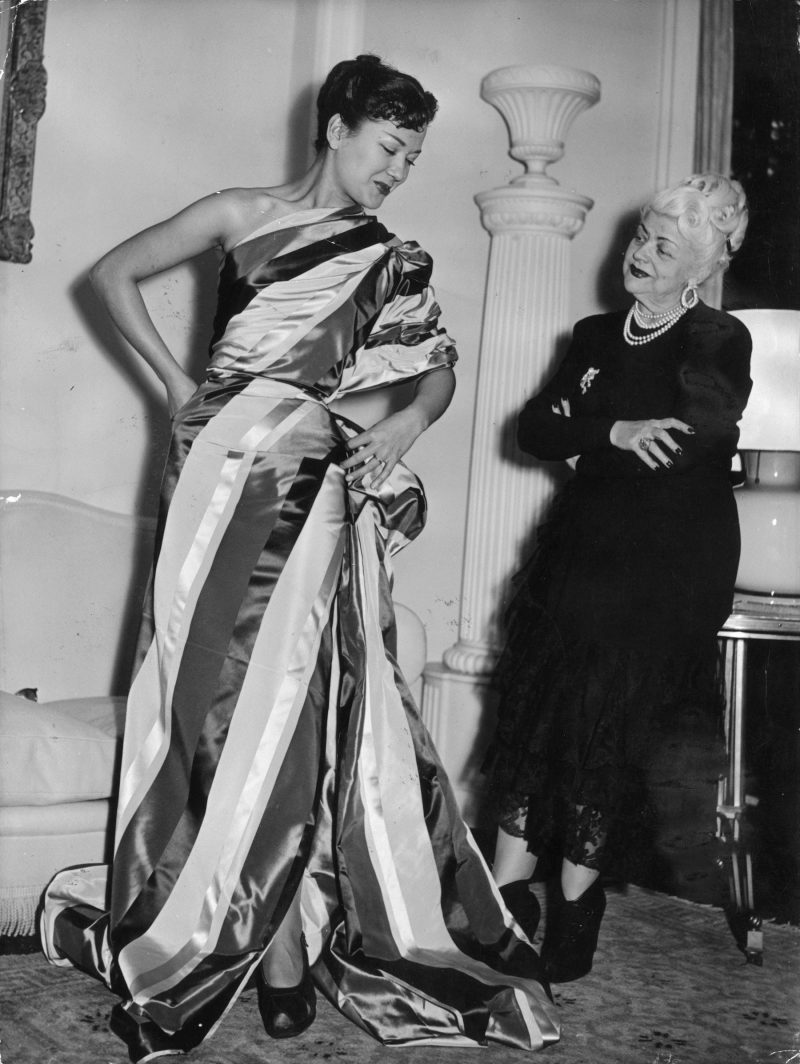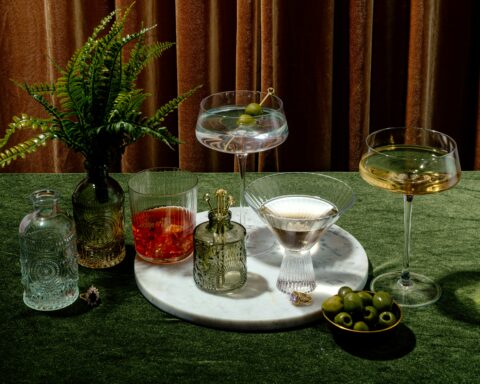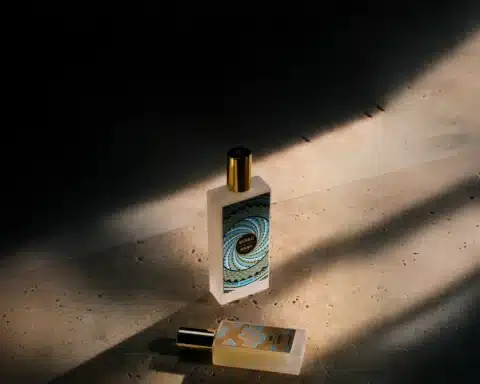[vc_row][vc_column][vc_column_text]Known as the icon of graceful and romantic femininity since its birth in 1932, the Parisian house of Nina Ricci has an important heritage in the field of haute couture. A seemingly timeless heritage as the brand is now experiencing a renaissance.
Born in 1883 in Turin, the famous seamstress Maria Adelaid Nielli, nicknamed “Nina” since childhood, entered the world of couture in 1908 when she made her debut at Raffin, a famous fashion house among the provincials. For 24 years, the fashion virtuoso ran her own department there.
When she married Luigi Ricci, from a family of Florentine jewellers, she became Nina Ricci. In 1932, she founded the Haute Couture House in Paris at the instigation of her son Robert Ricci. Indeed, the creation of the House was on the condition that the latter would manage the whole business aspect so that she could devote herself to creation.
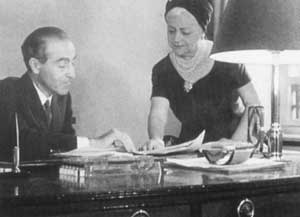
Located at 20 rue des Capucines, the house was born in an era when women dominated creation. Among the most famous: Madeleine Vionnet, Jeanne Lanvin, Coco Chanel and Elsa Schiaparelli. It quickly became a great success thanks to the accuracy of the cuts and the nobility of the materials chosen by Nina, but also to her son’s extensive financial knowledge.
Elegance is above all about being yourself.
Carried by a unique know-how, the house then seduced the Parisian elite and adhered perfectly to the fashion of the time. Moreover, Nina Ricci did not draw, she sewed directly on the wooden mannequins in the workshop, and sometimes even on her clients’ bodies to best match the lines of each woman.
“Elegance is above all about being yourself,” she said.
The first to offer two intermediate collections that are more affordable for young rags, the house offers an accessible and simple, yet high quality style.
In 1941, the perfume division was created by Robert Ricci, which led to a long collaboration with Lalique and the Coeur-Joie. In 1946, the house launches Coeur-Joie and 2 years later l’Air du temps, which allows it to compete with Chanel n°5 or Guerlain’s Shalimar.

A succession of creators
In 1954, the designer with the Golden Hand decided to put an end to her activity. She chose Jules-François Crahay as artistic director of the company. His more architectural style was a great success. It is also thanks to her first Crocus collection that the company gained international renown. It is during this same year that the house moves towards ready-to-wear with Mademoiselle Ricci, a semi-couture line.
In 1964, Gérard Pipart succeeded him for 30 years and it was his creations that began to showcase a refined woman with flamboyant ready-to-wear in haute couture collections.
In 1998, the House was acquired by the Spanish company PUIG, distributor of the brand’s perfumes.
Designers, creators follow one another, among them great names : Massimo Guissani, Nathalie Gervais, James Aguiar, Lars Nielsen, Olivier Theyskens, Peter Copping, Guillaume Henry, and to finish, the creative duo Rushemy Botter and Lisi Herrebrugh.
Lars Nilsson relaunched sales of the sleeping house in 2003, Olivier Theyskens boosts business with his gothic-romantic creations, Peter Copping imposes his style whose feminine spirit, imbued with softness and lightness, recalls that of the house.
In 2018, Rushemy Botter and Lisi Herrebrugh took over the reins of the company and combined their style of tailoring and streetwear with Nina Ricci’s feminine and classic romanticism. But more importantly, they reconcile the latter with one of her past signatures: portability.
“The first thing we had to understand was how to blend our aesthetics with the Nina Ricci heritage. Once you go in depth and commit yourself to an idea, it becomes innate and you can do something new,” the couple said.

It is fortunate for the company that the current directors, the couple Rushemy Botter and Lisi Herrebrugh, have not disappointed the brand’s expectations. Since 2018, they have been able to achieve the brand’s objectives with flying colours and have mastered the spirit of the brand to perfection.
Lightness, colours and softness are the order of the day in the house’s creations, whether in ready-to-wear, perfumery or household linen.
Through materials such as satin, silk, lace as well as bows, ribbons and doves, the brand is now massively spreading its DNA: the romanticism of luxury.
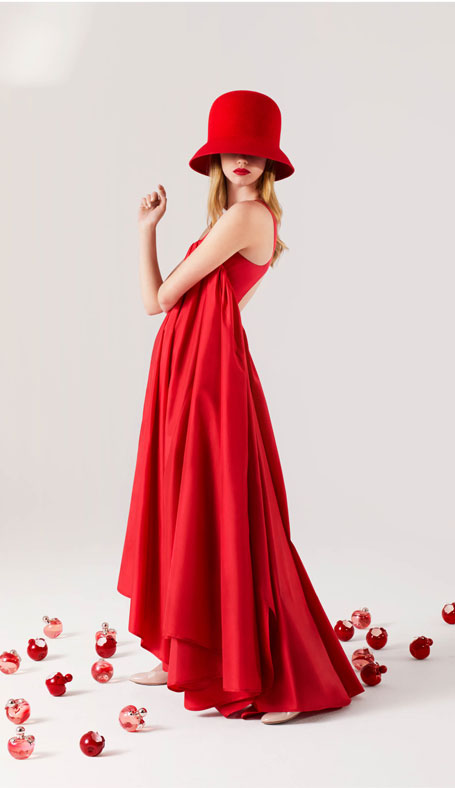
The only downside is that the house is controlled by the Puig family alongside Jean-Paul Gaultier, Paco Rabanne, Carolina Herrera and Dries Van Noten. The group is mainly known for its fragrances and not for fashion, which could be detrimental to Nina Ricci’s original division. The Spanish group also terminated Jean-Paul Gaultier’s ready-to-wear business just one year after taking control of his house, while retaining his workshop and haute couture fashion show.
Read also > LUXURY WATCHMAKING : THE TEN MOST MEMORABLE AUCTIONS OF THE YEAR 2020
Featured photo: © Press[/vc_column_text][/vc_column][/vc_row]




